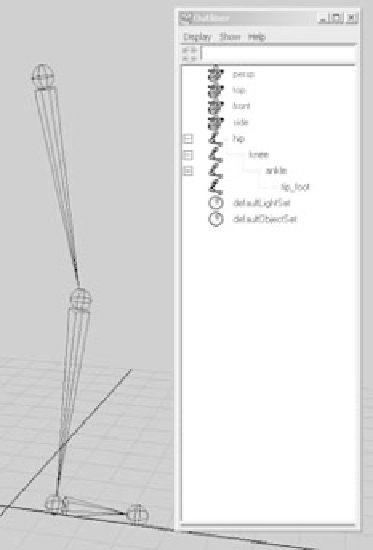Graphics Programs Reference
In-Depth Information
Skeletons and Kinematics
In your body, your muscles move your bones; and as your bones move, parts of your
body move. Bones are your internal framework.
In CG animation, a
skeleton
is an armature built into a 3D model that drives the geom-
etry when the bones are moved. You insert a skeleton into a CG model and attach or bind
it to the geometry. The skeleton's bones are animated (typically with rotations), which
in turn move the parts of the geometry to which they're attached. By using a skeleton,
Maya allows bending and deformation of the attached geometry at the skeleton's
joints
.
A skeleton is, of course, useful for character work, but skeletons have many other uses.
Any time you need to drive the geometry of a model with an internal system, such as fly-
fishing line or a tree bending in the wind, you can use skeletons. You'll use them to drive
the locomotive later in this chapter.
Skeletons and Hierarchy
Skeletons rely on hierarchies. Bones are created in a hierarchical manner, resulting in a
root joint
that is the parent of all the joints beneath it in the hierarchy. For example, a hip
joint can be the root joint of a leg skeleton
system in which the
knee joint
is the leg's
child, the
ankle joint
belongs to the knee,
and the five
toe joints
are the ankle's chil-
dren. (See Figure 9.1.)
Using skeletons, you can easily create
an immediate hierarchical system with
which to animate. Furthermore, pieces of
geometry need not deform to be attached
to a bone system. Objects can be grouped
with or under joints. They move under
their parent joint and rotate around that
joint's pivot as opposed to their own pivot
point.
A skeleton is really just a collection of
grouped and properly positioned pivot
points called
joints
that you use to move
your geometry, whether it deforms or not.
A
bone
is the length between each joint;
bones only show you the skeletal system.
Inverse Kinematics (IK)
and
Forward Kinematics (FK)
are the methods you use to ani-
mate a skeletal system. FK rotates the bones directly at their top joint to assume poses.
Figure 9.1
A leg skeleton and
its hierarchy
Hip joint
Bone
Knee joint
Bone
Ankle joint
Joint at the
tip of the foot






















